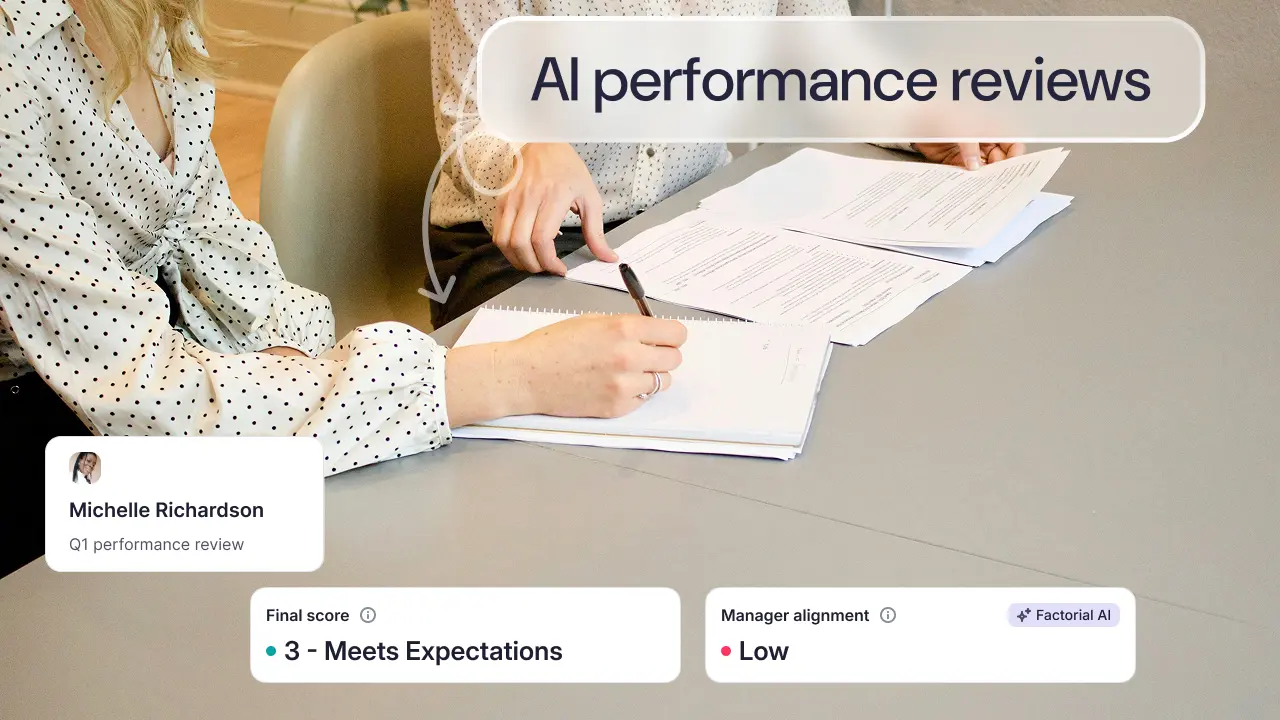Maintaining a healthy work-life balance has become a top priority for many employees. So much so that, according to a study conducted by Gartner, most employees these days value work-life balance more than health benefits. To address this need, many employers are turning to alternative work arrangements such as compensatory time off, commonly known as “comp time“.
So, what is comp time, and how does it work? Is it the same as overtime? And which guidelines and regulations do you need to keep in mind if you offer this working arrangement?
In today’s post, we will share answers to all these questions. We will also explore how using the right tech can help you create a streamlined and compliant system for tracking employee compensatory time.
What is comp time?
Let’s start with the basics: What is comp time?
Comp time, short for compensatory time, is where you provide employees with additional time off from work in lieu of receiving overtime pay. It is an alternative arrangement that allows employees to accumulate extra hours worked beyond their regular schedule, which they can later use as paid time off.
Typically, comp time is offered as a benefit to employees who work more than their required hours during a given pay period, such as during busy periods or peak seasons. Instead of receiving immediate monetary compensation for the extra hours that they have worked, employees accrue comp time hours.
As with other types of flexible working arrangements (such as the 9/80 work schedule), comp time can be a valuable tool for promoting work-life balance, increasing employee satisfaction, and providing flexibility in scheduling. However, the specific rules and regulations governing comp time can vary between states. For example, some states require employers to obtain employee consent or adhere to certain conditions when implementing comp time policies. It is therefore important that employers are familiar with the applicable laws to ensure compliance. Employers also need to establish clear guidelines, communicate effectively, and track comp time accurately to ensure a fair and transparent system for all parties involved.
How does comp time work?
Now that we’ve answered the question, “What is comp time?”, let’s explore how it works.
As we mentioned above, the specifics of how comp time works vary depending on state laws and regulations as well as internal employer policies. However, let’s take a look at what the concept means in general terms.
- Accrual. When an employee works over their contracted hours, they earn comp time. The rate at which they earn comp hours can vary. However, it is often calculated as time and a half (1.5 hours of comp time for every hour of overtime worked). For example, if an employee works 10 hours of overtime, they will accrue 15 hours of comp time.
- Accumulation. Over time, an employee accumulates earned comp hours or comp days. Employers must track these hours and maintain accurate records so that they can generate payslips at the end of each pay period. Specifically, employers need to keep a record of the date, duration, and reason for overtime worked. This data can be collected and stored using a time clock or timesheet software.
- Using comp hours. Once accumulated, employees can then request to use their accrued comp time as paid time off. Most employers establish internal guidelines for these requests to avoid scheduling or understaffing issues. It’s also a good idea to use a time clock with leave management features so that you have an established, automated process for requesting and approving time off. An online leave management system makes this process even smoother by integrating comp time requests directly with vacation and sick leave policies, reducing scheduling conflicts and ensuring fairness.
- Conversion. In some cases, if comp time is not claimed within a specific period, employees can request to convert the time into monetary compensation. This conversion process ensures that employees do not accumulate excessive amounts of unused comp time.
Comp time vs. overtime
Implementing a system like the above for compensatory time can be a great way to offer flexibility to employees whilst maintaining adequate staffing levels during busy periods. However, it’s important to make sure you are complying with state and federal laws relating to overtime.
Before we explore these laws, let’s clarify the difference between comp time and overtime.
Comp time and overtime are two different approaches to compensating employees for working additional hours beyond their regular work schedule. While both options aim to address the extra time employees devote to their jobs, they differ in how compensation is provided.
- Overtime: Overtime refers to the practice of paying employees at a higher rate for every hour worked beyond a predetermined threshold, typically 40 hours per workweek. The additional pay rate, often 1.5 times the regular hourly wage, serves as a monetary form of compensation for the extra hours worked. Overtime is typically mandated by labor laws and regulations and is aimed at ensuring fair compensation for employees who exceed their standard working hours.
- Comp time: Comp time, on the other hand, involves offering employees time off from work in lieu of overtime pay. Instead of receiving extra wages, employees accumulate comp time hours for working overtime. These accrued hours can be used as paid time off at a later date. This provides employees with the flexibility to take time off while maintaining their regular pay. However, comp time policies often have limitations and guidelines, such as requiring advance notice or specifying maximum accrual limits.
Is comp time legal?
The choice between comp time and overtime often depends on legal requirements and employer policies. Some states have specific regulations governing the use of comp time. This often includes requirements for employee consent and restrictions on accumulation or usage. Employers need to ensure compliance with applicable laws and maintain transparency when implementing compensatory policies to meet the needs of both employees and the organization.
Let’s start with federal law.
In the United States, comp time is subject to the Fair Labor Standards Act (FLSA). This federal labor law covers terms like hours worked, minimum wage, and overtime pay, among others. The FLSA also sets the boundaries for using compensatory time off instead of overtime.
Under the FLSA, private sector employers are generally required to pay employees overtime wages for hours worked beyond 40 in a workweek. However, there is an exception for public sector employees, where comp time may be allowed instead of immediate overtime pay. Public sector employers, such as federal, state, and local government agencies, may offer comp time as an alternative, subject to specific conditions and regulations set by the FLSA.
You also need to make sure you check laws and regulations in your state in case there are any rules governing comp time. For example, some states require employers to obtain written agreements or provide employees with the option to choose between comp and overtime pay.
Compensatory time off guidelines
If you offer comp time, then you need to establish clear compensatory guidelines. These guidelines should determine how employees can accrue and use time off for any extra hours that they might work. This includes how they can earn comp hours and the accrual rate. It also includes any limitations on accumulation and the process for requesting and using compensatory time off.
You also need to determine which tools you will use for employee time tracking and how you will manage remote employee time tracking. Essentially, this means that you need a reliable employee clock-in system, such as an electronic time clock. This will help you maintain an accurate record of how many hours each employee works during each pay period. Without a digital system like this for employee time tracking, it will be very difficult to keep track of working hours so that you can generate accurate and timely payslips for your employees.
Finally, you need to make sure you take into account any legal restrictions and limitations. This includes employment status, the type of organization that you run, and whether there are any specific state guidelines that you need to be aware of.
Let’s take a look at these restrictions and limitations in a bit more detail.
Exempt and nonexempt employees
The first factor you need to consider before offering compensatory time off is the employment status of your workforce.
Exempt employees:
- Salaried employees are exempt from overtime pay requirements under the Fair Labor Standards Act (FLSA). As a result, they are not eligible for comp time or overtime pay.
- You can still offer additional time off benefits to exempt employees, such as vacation or personal days, to promote work-life balance and employee well-being. However, if your exempt employees work beyond their regular hours, then you are limited to other means of recognition, such as bonuses.
Nonexempt employees:
- Generally eligible for overtime pay under the FLSA.
- Time off must be accrued at a rate of 1.5 hours for every hour of overtime worked, as per FLSA guidelines.
- There are limits on the total number of comp hours that employees can accrue (e.g., 240 hours).
- Nonexempt employees must be given the opportunity to use their accrued comp hours within a reasonable period to avoid excessive accumulation.
- You must pay nonexempt employees at their regular rate of pay for the hours they take as time off.
- Employers should have clear policies and procedures in place for requesting and tracking compensatory time off. This ensures fair and consistent treatment.
Private vs. public sector employees
Comp time guidelines can also differ between private sector and public sector employees.
Private sector employees:
- Private sector employees are subject to the Fair Labor Standards Act (FLSA) regulations regarding overtime pay. Under the FLSA, private sector employers are generally required to provide overtime pay (typically 1.5 times the regular rate) for nonexempt employees who work more than 40 hours in a workweek.
- Employers working in the private sector are not typically allowed to offer comp time in lieu of overtime pay, except in certain limited circumstances or industries where specific exceptions may apply. However, these exceptions are rare and typically require prior approval or special circumstances.
- Private sector employers may still offer additional time off benefits, such as vacation or personal days, to promote work-life balance and employee well-being.
Public sector employees:
- Public sector employees have different rules regarding compensation time based on specific regulations and collective bargaining agreements. This includes government agencies and certain nonprofit organizations.
- The FLSA allows public sector employers to offer comp time at work to their nonexempt employees instead of overtime pay. Comp time is usually accrued at a rate of 1.5 hours for each hour of overtime worked.
- Employers must follow specific guidelines for accrual, usage, and limitations of compensation time. These regulations include maximum accrual limits, requirements for documentation, and provisions for using comp time within a specified timeframe.
Differences in state comp time laws
As we have already mentioned, state comp time laws in the United States can vary. It’s therefore vital that you research and understand the specific regulations that apply in your state. That way, you can be sure that your compensatory time policy complies with all requirements. As a result, you can avoid potential fines and penalties.
Here are a few common areas where state comp time laws may differ:
Industries
Some states may limit or restrict comp time to certain industries. For example, according to California’s overtime laws, comp time is generally not allowed as an alternative to overtime pay for private sector employees.
Accrual and usage limits
Certain states impose specific rules on the maximum amount of compensation time that an employee can accrue. They also regulate how employees can use these hours. For example, public sector employees in New York can accrue a maximum of 240 hours (or 30 days).
Employee consent
In some states, employers need written employee consent before implementing compensation time working arrangements. For example, in Minnesota, this written agreement must specify the terms and conditions under which comp time will be accrued and used instead of overtime pay.
Conversions
Certain states have regulations governing the conversion of unused compensation time into cash. For example, if an employee in Washington does not use accrued compensation hours within 24 months, the employer must convert it into cash compensation.
Overtime
Some state laws include specific rules on how to calculate compensation time rates (regular rate vs. overtime rate). For example, according to Massachusetts law, when nonexempt employees accrue comp time, it must be calculated at a rate of 1.5 hours for each hour of overtime worked. In contrast, Alaska uses a 1:1 ratio for comp time accrual.
Collective bargaining agreements
In states with a strong union presence, collective bargaining agreements may outline specific provisions that differ from state laws. These agreements, negotiated between the employer and the union, often include specific terms and conditions for the accrual and usage of comp time.
Ensuring compliance with the right time-tracking practices
The most vital aspect of implementing a compensation time policy is making sure that you implement the right tools and practices for employee time tracking. This helps you maintain transparency, comply with state and federal labor laws, and effectively manage employee working hours.
Factorial’s time-tracking features are a great solution for this.
With our time card app you get:
- Automated time tracking. Employees can clock in and out straight from their mobile devices, eliminating the need for manual timesheets. This helps you maintain an accurate, real-time record of employee time and attendance, including accrued overtime and compensation time.
- Break tracking. Factorial’s time-tracking features also enable employees to record and track their break and rest periods. That way, you can be sure that they are taking appropriate breaks as required by labor regulations.
- Mobile and web access. Employees can access Factorial’s time card app through both mobile and web applications. As a result, they can log their work hours and breaks from any location. This is especially useful if you have remote employees.
- Manager approval. Managers can review and approve employee time entries, ensuring accuracy and compliance and promoting transparency and accountability.
- Reporting and analytics. Factorial’s reporting and analytics tools provide valuable insights into employee work hours, overtime, and attendance patterns. This makes it much easier to ensure that you are complying with labor laws. You also get access to valuable insights that can help you better manage your workforce.
Ultimately, Factorial’s time-tracking solution offers a number of appealing benefits. Notably, it helps you streamline your time management processes, improve accuracy, and ensure compliance with comp time regulations. That way, you can build a happy and productive workforce and secure your reputation as an employer that values employee health and wellbeing.



